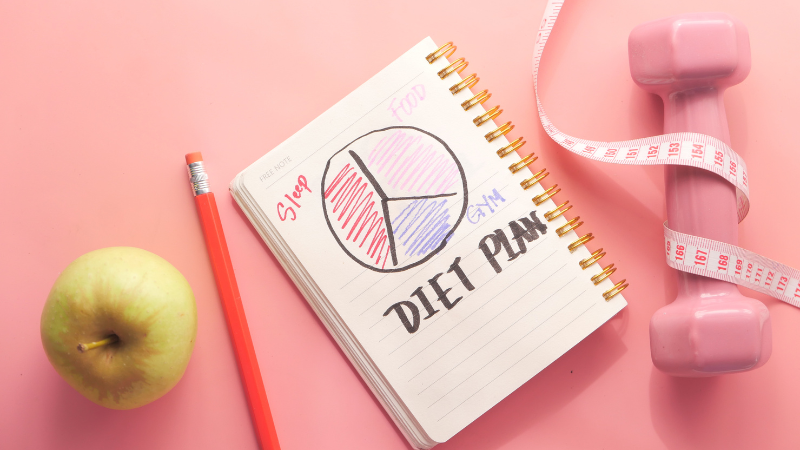Understanding the Foundations of Physical Wellness
What Is Physical Wellness? Learn how physical wellness encompasses a healthy lifestyle involving regular exercise, balanced nutrition, adequate sleep, and preventive healthcare practices. Prioritize your physical well-being for overall health and vitality.

Introduction
Greetings from the physical wellness industry! I’m thrilled to accompany you on a journey that captures the essence of a healthy and satisfying life as a seasoned fitness instructor who specializes in total well-being. The idea of physical well-being, its importance in upholding a balanced lifestyle, and the essential elements that support your general health and energy will all be covered in this article.
Physical wellness entails cultivating your body, mind, and spirit to create a state of optimal health and happiness. It goes beyond going to the gym or sticking to a rigid diet. Making your physical health a priority can help you become stronger and more resilient on the physical level as well as mentally and emotionally.
The four main pillars of physical wellness—regular exercise, a balanced diet, getting enough sleep, and preventative healthcare procedures—will be covered in detail throughout this essay. To construct a solid foundation for a healthier and more satisfying life, each of these pillars is essential.
You will be able to take control of your health journey and make decisions that have a positive influence on every aspect of your life by realizing how these elements are interconnected and embracing a holistic approach to your well-being.
Do not forget that physical wellness is about making steady progress toward a healthier version of yourself, not about aiming for perfection. You’ll learn the pleasures of leading a life full of vitality and well-being if you embrace the process with an open mind and a readiness to learn.
So let’s set out on this educational journey together as we learn the actual meaning of physical fitness and arm ourselves with the information and skills needed to live a life filled with fortitude, vigor, and joy. Are you prepared to make the first move toward a happier and healthier version of yourself? Let’s start now!
Components of Physical Wellness

Physical well-being is a broad idea that includes a number of crucial elements to achieving total health and vigor. People can lead more balanced and satisfying lives by paying attention to these essential factors. Let’s examine the fundamental elements of physical wellness and how each one enhances our well-being:
Regular Exercise:
To achieve and sustain physical fitness, regular physical activity is essential. Numerous advantages of exercise are available for the body and the mind. It raises flexibility, strengthens bones and muscles, promotes energy levels, and is good for cardiovascular health.
Regular exercise also results in the release of endorphins, which are organic mood enhancers that soothe tension and foster a sense of well-being. We can experiment with different exercises, such as sports, yoga, dancing, and strength training, to include exercise into our lives. It is simpler to stay motivated and dedicated to our exercise program when we engage in things we enjoy.
Balanced Nutrition:
Nutritional health is crucial for promoting physical wellness. Our bodies receive the vital nutrients, vitamins, and minerals they require for optimal performance from a well-balanced diet. The importance of ingesting a variety of entire foods, such as fruits, vegetables, whole grains, lean proteins, and healthy fats, should be emphasized.
Avoid consuming processed and sugary foods in excess as they might cause energy swings and harm to your health. Maintaining hydration and general health also requires drinking a lot of water.
Adequate Sleep:
Physical wellness is substantially impacted by the restorative nature of sleep. The body heals tissues, solidifies memories, and controls hormones while we sleep. Lack of sleep increases the chance of developing chronic health disorders, exhaustion, immune system deterioration, and cognitive impairment. To enhance sleep quality, set a goal of 7-9 hours of high-quality sleep each night and develop a calming bedtime ritual.
Preventive Healthcare Practices:
For physical wellness, healthcare must be approached proactively. Preventive screenings and routine physicals can help identify health problems early, improving the likelihood of successful treatment. Keep up with regular health screenings depending on age and risk factors and immunization schedules.
Put your mental health first and, if necessary, think about getting counseling or professional assistance. Maintaining general well-being requires understanding and effective management of any existing medical issues.
Individuals can build a strong foundation for a happier and more fulfilling life by concentrating on five essential aspects of physical well-being. Always keep in mind that taking tiny, regular efforts toward a balanced lifestyle can have a big, lasting impact on your overall physical health and wellness.
Creating a Personalized Physical Wellness Plan

The key to achieving good physical wellness is to take a thoughtful, individualized strategy that fits your unique needs and objectives. This section will go into detail on how to create a personalized strategy that takes into account many facets of your lifestyle, such as exercise regimens, dietary preferences, and stress-reduction methods.
Assessing Current Fitness Level and Health Status:
Examining your present level of fitness and general health is crucial before starting any physical wellness program. Think about things like your workout routine, food, sleep schedule, and any medical concerns you may have. During this assessment phase, speaking with a healthcare expert or fitness instructor might offer insightful advice.
Setting Realistic Goals for Physical Wellness:
Setting definite, attainable goals will help you stay motivated and monitor your progress. Establish SMART (specific, measurable, achievable, relevant, and time-bound) short-term and long-term goals. Having clearly defined goals can help you stay committed to your path, whether your objective is to increase cardiovascular endurance, lose weight, or build strength.
Designing an Exercise Routine and Nutrition Plan:
Adapt your exercise program to your tastes, level of fitness, and free time. A well-rounded fitness program should incorporate a variety of cardiovascular, strength-training, flexibility, and, if possible, mind-body activities like yoga or Pilates. Work with a nutritionist or dietitian to develop a balanced diet that satisfies your demands for energy and benefits your fitness objectives.
Incorporating Stress-Reduction Techniques:
Stress-reduction measures must be incorporated into your plan because ongoing stress has a bad impact on physical wellness. To manage stress levels, consider techniques like mindfulness meditation, deep breathing exercises, or spending time in nature. Including these routines in your day can make a big difference in how well you feel overall.
Always keep in mind that developing a specific physical wellness plan is a continuous process. Be willing to modify and refine your plan as you move forward and encounter changes in your life so that it better meets your changing needs. Celebrate your progress along the way and don’t let setbacks get you down; they are a necessary component of every transformative journey. Stay committed, stay positive, and embrace the power of physical wellness to lead a healthier, happier life.
Staying Motivated and Overcoming Challenges

Staying motivated and overcoming the inescapable obstacles along the way are essential components of obtaining and maintaining physical well-being. Whether you’re just getting started or have been working toward improved health for some time, long-term success depends on maintaining motivation and overcoming setbacks. Here are some helpful tactics to keep you on track and overcome obstacles:
Finding Intrinsic Motivation for Long-term Commitment:
- Reflect on Your “Why”: Take some time to identify the deeper reasons driving your desire for physical wellness. It could be to improve your overall health, boost energy levels, manage stress, or enhance your quality of life. Connecting with these intrinsic motivations will help you maintain focus and dedication even when external factors fluctuate.
- Set Meaningful Goals: Establish clear and achievable goals that align with your motivations. Break them down into smaller milestones, celebrating your achievements along the way. This sense of progress will fuel your drive to keep moving forward.
- Visualize Success: Use visualization techniques to see yourself living a healthier and more vibrant life. Picture the positive outcomes of your efforts and let these visions inspire you on challenging days.
Strategies to Overcome Obstacles and Plateaus:
- Embrace the Growth Mindset: View challenges as opportunities for growth rather than setbacks. Understand that setbacks are a normal part of any journey, and they offer valuable lessons to help you improve.
- Be Flexible and Adapt: Life is unpredictable, and circumstances may arise that disrupt your routine. Be flexible and willing to adapt your fitness and nutrition plans to accommodate changes while staying committed to your overarching goals.
- Track Your Progress: Keep a record of your achievements, such as improvements in strength, stamina, or mood. Reviewing your progress can be highly motivating and remind you of how far you’ve come.
Seeking Support from Family, Friends, or Fitness Professionals:
- Share Your Goals: Inform your close friends and family about your commitment to physical wellness. Their support, encouragement, and understanding during challenging times can make a significant difference.
- Find a Workout Buddy: Partnering with someone who shares similar health goals can provide mutual motivation and accountability. Working out together can be enjoyable and foster a sense of camaraderie.
- Consult with Fitness Professionals: Consider seeking guidance from certified fitness instructors or personal trainers. They can provide expert advice, tailor workouts to your needs, and offer insights into optimizing your fitness routine.
Physical well-being is a process, not a destination, keep that in mind. Accept the journey and treat yourself kindly when you encounter obstacles. Celebrate each accomplishment, no matter how minor, and have a positive outlook. You’ll develop resilience and form lasting habits that support a longer-term healthier, happier living by remaining motivated and conquering obstacles.
Avoiding Common Pitfalls
Recognizing and avoiding typical hazards that may obstruct development or even cause setbacks is essential to achieving and maintaining physical well-being. Individuals can establish lasting routines to support their journey towards optimal health by having a clear grasp of these difficulties. Let’s examine some typical pitfalls and methods to avoid them:
Overtraining and the Importance of Rest Days:
- The allure of pushing one’s limits to achieve faster results can lead to overtraining.
- Overtraining can lead to fatigue, increased risk of injuries, and burnout.
- Incorporating regular rest days into a workout routine is essential to allow the body time to recover and repair.
Identifying and Avoiding Fad Diets and Unsustainable Practices:
- Fad diets promise quick fixes but often lack essential nutrients and can be challenging to maintain long-term.
- Restrictive eating patterns can lead to nutritional deficiencies and adversely affect overall health.
- Instead, focus on adopting balanced, nutrient-dense meal plans that are enjoyable and sustainable in the long run.
Understanding the Difference Between Progress and Perfection:
- Striving for perfection in physical wellness can lead to disappointment and frustration.
- Embrace the concept of progress, recognizing that small, consistent steps lead to significant improvements over time.
- Celebrate achievements and milestones, no matter how small, to maintain motivation and a positive mindset.
Balancing Physical Wellness with Other Aspects of Life:
- Busy lifestyles can make it challenging to prioritize physical wellness amid various responsibilities.
- Strive for a balanced approach, integrating physical activity and healthy eating into daily routines.
- Find creative ways to incorporate wellness practices, such as walking during breaks or preparing nutritious meals in advance.
Avoiding Comparison and Embracing Individuality:
- Comparing progress or appearance to others can lead to self-doubt and dissatisfaction.
- Recognize that each individual’s journey to physical wellness is unique and should be appreciated as such.
- Focus on personal goals and achievements, rather than external standards.
Nurturing a Positive Relationship with Exercise and Nutrition:
- Viewing exercise and nutrition as punishments for indulgence can create a negative mindset.
- Develop a positive attitude towards physical activity and nourishing foods, viewing them as tools for enhancing health and vitality.
- Find activities and meals that bring joy and satisfaction, making it easier to stay consistent in the long term.
Individuals can manage their journey to physical fitness with greater confidence and resiliency by being aware of these typical traps and putting tactics to address them into practice. The road to good health is not without obstacles, but with perseverance and a sensible strategy, long-term success is possible.
Mental and Emotional Aspects of Physical Wellness

Recognizing the Mind-Body Connection
Physical wellness encompasses more than just our physical health; it also includes our mental and emotional health. Achieving overall health and vigor requires a strong understanding of the mind-body link. Tension, headaches, or even a weaker immune system can be physical symptoms of stress, anxiety, or other negative emotions. On the other hand, we can have a good effect on our physical health when we put our mental and emotional health first.
Utilizing Mindfulness and Meditation for Well-being
Meditation and mindfulness exercises can be effective methods for improving physical wellness. Being mindful means paying attention to the present, developing self-awareness, and accepting one’s thoughts and feelings without passing judgment. By bringing mindfulness into our daily activities, we can lower our stress levels, sharpen our attention, and choose better foods and exercise regimens.
By encouraging calmness and inner serenity, meditation enhances mindfulness. It enables mental clarity, mental decluttering, and mental peace. Regular meditation can improve sleep quality, strengthen the immune system, and lower blood pressure, all of which enhance physical wellness.
Coping with Stress and Emotional Challenges
Although stress is an unavoidable aspect of life, how we respond to it has a big impact on how physically well we are. It’s crucial to have effective stress management skills. Exercises like yoga, tai chi, or aerobics might help the body release endorphins, which are the body’s natural stress relievers. In addition, engaging in enjoyable activities, spending time with loved ones, or connecting with nature can all help to reduce stress and enhance our general well-being.
Emotional problems must also be addressed. Getting help from close friends, family members, or counselors can offer insightful advice and coping mechanisms. We can maintain a balanced relationship between our mental and physical health by acknowledging and processing our emotions.
Section VI concludes by emphasizing the evident link between mental and emotional well-being and physical heath. People can improve their general health, leading to a more peaceful and balanced life, by embracing mindfulness, meditation, and efficient stress coping strategies. To achieve complete physical wellness, keep in mind that taking care of your body as well as your mind is essential.
Embracing a Holistic Approach
Recognizing the Interconnectedness of Physical, Mental, and Emotional Wellness
Mental and emotional health go hand in hand with physical health. Understanding and fostering these interdependent components of ourselves is necessary for achieving general health because our bodies, minds, and emotions are inextricably interwoven. When one area is neglected, it may have an effect on the others, resulting in an imbalance that lowers our quality of life as a whole.
We must understand that physical health is more than simply being free from disease or being physically active if we are to fully embrace a holistic approach to physical wellness. It also entails nourishing our emotional and mental states. How we approach our fitness journey and general way of life can be immensely influenced by a good mindset and emotional fortitude.
Engaging in Activities for Joy and Fulfillment
A holistic approach to physical wellness entails choosing pursuits that make life enjoyable and fulfilling. Engaging in activities that make us joyful and relieve stress is just as vital as following a strict diet and regular training routine. All of these activities, such as dancing, hiking, drawing, and spending time with loved ones, improve our emotional and mental health.
We increase our drive to live a healthy lifestyle by incorporating activities that give us a feeling of purpose and satisfaction. Our immune systems and physical recovery can both be strengthened by happiness and contentment.
Being aware of our leisure activities is another aspect of adopting a holistic perspective. Excessive screen time, particularly on social media, should be reduced in favor of more fulfilling activities to improve both mental and physical health.
Cultivating Mindfulness and Meditation for Wellness
Through the reduction of stress, improvement of attention, and enhancement of emotional control, mindfulness and meditation are potent techniques that can assist physical fitness. By engaging in mindfulness practices, we increase our awareness of our bodies’ demands, enabling us to make better decisions and avoid engaging in bad habits excessively.
Contrarily, meditation encourages relaxation and brings about mental calmness, which lessens the harmful effects of stress on the body. Regular meditation sessions can help with digestion, immune system health, and better sleep.
We may develop a more positive relationship with our bodies, connect with our inner selves, and better understand our emotions by incorporating mindfulness and meditation into our daily lives. By being self-aware, we can recognize any physical or mental problems that might need support and care.
We build a strong foundation for long-term health and happiness by adopting a holistic approach to physical well-being that takes the mind-body link into account and encourages joyous and fulfilling activities. We may live life to the fullest and realize our actual potential in every element of it by taking care of our physical, mental, and emotional welfare.
Seeking Professional Guidance
The Role of Fitness Instructors and Health Experts
Enhancing physical wellness necessitates seeking competent advice. In order for people to attain their health and fitness objectives, fitness instructors and health professionals are essential. These experts have the skills and experience necessary to develop custom programs that take into account each person’s particular requirements, degree of fitness, and overall health.
- Customized Workout Programs: Fitness instructors can design tailored workout programs that target specific fitness objectives, such as weight loss, strength building, flexibility, or overall cardiovascular fitness. They take into account any physical limitations or medical conditions to ensure safe and effective exercises.
- Proper Exercise Form: One of the key benefits of working with a fitness instructor is learning how to perform exercises correctly. Proper form not only maximizes the benefits of each exercise but also reduces the risk of injury.
- Motivation and Accountability: Fitness instructors provide motivation and encouragement, which can be instrumental in staying committed to a fitness routine. Their guidance helps individuals stay on track and accountable to their goals.
When to Consult with Healthcare Professionals
Physical wellness may occasionally need for further medical training. Doctors, physical therapists, and dietitians, among other healthcare specialists, are crucial in addressing specific health issues and providing expert counsel.
- Pre-existing Health Conditions: If you have any pre-existing health conditions or medical concerns, it’s essential to consult with a healthcare professional before starting a new fitness regimen. They can offer insights on exercise modifications and potential limitations.
- Injury Rehabilitation: For individuals recovering from injuries, working with a physical therapist can be instrumental in the healing process. Physical therapists can design rehabilitation programs that promote recovery and prevent further injuries.
- Nutrition Guidance: Nutritionists and dietitians are valuable resources for those seeking to improve their eating habits and overall nutrition. They can develop personalized meal plans to support specific health goals.
- Lifestyle Modifications: Healthcare professionals can offer guidance on making lifestyle changes that contribute to physical wellness, such as stress management, smoking cessation, and adequate hydration.
In summary, consulting a specialist is a crucial first step in enhancing physical fitness. Fitness instructors and health professionals can offer tailored regimens, advice on how to exercise properly, inspiration, and accountability.
Additionally, medical professionals can address particular health issues and provide insightful advice to improve general welfare. People can start down a safe and successful path to a healthier and happier life by utilizing the expertise of these professionals.
Conclusion
Congratulations for starting your exploration of the fundamentals of physical wellness! I hope this post, written by a fitness expert with expertise in this area, has given you insightful information about the importance of addressing your physical health. Keep in mind that a healthy body is the foundation of a happy and fulfilling life.
We have learned from our research that physical wellness includes many important components. Regular exercise strengthens your body, improves your attitude, and increases your energy levels. A balanced diet provides your body with the necessary nutrients for optimal operation and general health. While getting enough sleep enables your body to recover and mend, preventative healthcare habits give you the ability to identify potential health issues early.
It can be empowering to create a physical fitness strategy that is unique to you. Set attainable objectives, develop enduring routines, and keep in mind that incremental changes can be made over time. Recognize the intricate links between your physical, mental, and emotional components of yourself and embrace the holistic nature of physical wellness.
You can run into difficulties and roadblocks while you work toward improved health. Accept these circumstances as chances for development and education. Whether it’s friends, family, or fitness experts, enlist their help to keep you accountable and inspired.
Be careful to steer clear of common dangers like overtraining and following fad diets. Remember that growth is not always linear and that striving for consistency rather than perfection will yield more fruitful outcomes.
Physical wellness includes not just taking care of your body but also your mind and emotions. For inner harmony and balance, embrace mindfulness exercises, meditation, and stress-reduction strategies.
Be willing to seek out professional advice as you advance. Fitness instructors, health specialists, and medical professionals can provide individualized counsel and assistance, focusing their knowledge on your particular requirements.
In conclusion, adopting a physical wellness lifestyle is a lifelong adventure that rewards you with increased vitality, better general health, and a greater sense of well-being. Start moving in the direction of a better and happier life, and keep in mind that each wise decision you make is an investment in your future.
I pray that your dedication to physical wellness will ignite your enthusiasm for life and encourage those around you to start their own wellness journeys. Here’s to a happy, active, and fulfilling life in the future!
Frequently Asked Questions
FAQs for “What Is Physical Wellness?”
Q: What does physical wellness mean?
A: Physical wellness refers to the state of overall health and well-being achieved through a balanced and active lifestyle. It encompasses regular exercise, proper nutrition, sufficient rest, and preventive healthcare practices.
Q: Why is physical wellness important for our health?
A: Physical wellness is essential because it impacts every aspect of our lives. Engaging in regular exercise helps improve cardiovascular health, boost immunity, and enhance mental clarity. Proper nutrition provides the body with essential nutrients for optimal functioning. Adequate rest and preventive healthcare reduce the risk of chronic diseases and promote longevity.
Q: How can I start improving my physical wellness?
A: Begin by assessing your current fitness level and health status. Set realistic goals for yourself and gradually incorporate regular exercise into your routine, such as walking, jogging, or joining fitness classes. Adopt a balanced diet rich in fruits, vegetables, lean proteins, and whole grains. Prioritize sleep by establishing a consistent sleep schedule. Regular health check-ups and screenings can help identify potential health issues early on.
Q: Is physical wellness only about exercise and diet?
A: No, physical wellness goes beyond just exercise and diet. While they are essential components, physical wellness also involves adequate rest and recovery, stress management, and mindfulness practices. It’s about embracing a holistic approach that considers the interconnectedness of your physical, mental, and emotional well-being to lead a healthier and more fulfilling life.
Related Physical Wellness Articles
Here are some articles related to Physical Wellness:
Physical Wellness Gear Guide: Must Have Items For Max Results
10 Essential Physical Wellness Tips for a Healthier You!
Take the 7 Day Physical Wellness Challenge Today
Physical Wellness Secrets Unveiled: Master Your Mind and Body!
From Couch to Fit: A Beginner’s Guide to Physical Wellness
Unlock Your Potential: Transform Your Body with Physical Wellness
Power Foods for Physical Wellness: Supercharge Your Workout


